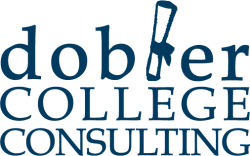Understanding Financial Aid Methodologies
So you know you will be applying for financial aid and you’re hearing something about methodologies.
Well, you’re hearing right. Methodologies is plural. There’s more than one. In fact, there are actually two methodologies for calculating financial aid: federal and institutional.
The federal methodology is used by the federal government when you submit the FAFSA (Free Application for Federal Student Aid) while the institutional methodology is used by individual colleges who require you to submit the CSS Profile, which is actually administered by the College Board.
So, what’s the difference beyond the names?
Good question.
While the FAFSA is required by all schools, only a couple hundred private schools require the CSS Profile. So, if you’re applying to the University of Connecticut, you won’t be required to fill out the CSS Profile. If you’re applying to Wesleyan University, a highly selective liberal arts college, you will be required to submit the Profile and you will then be subject to the more stringent requirements for aid eligibility.
The institutional methodology most often shows that a family needs to pay more for college than the federal methodology due to some of the following reasons:
1. If you own a business, 100% of its equity will be assessed.
2. Assets held in the names of siblings will be considered parental assets and assessed as such
3. Your home equity will be considered an asset
4. Only untaxed social security benefits for the student will be excluded. Benefits for the parent will not be excluded.
5. Pre-tax contributions to flex-plans for healthcare and dependent care are assessed as untaxed income
6. Education tax credits are assessed as untaxed income
Essentially, the federal methodology is much more forgiving than the institutional methodology. Since private colleges are dipping into their endowments to award institutional aid to their best applicants, they want to make sure this money is being used wisely (a very subjective term, here).
So, at the end of the day, take a close look at which schools you are applying to so that you know who is going to require the CSS Profile. Not all private schools will, but the more selective the school, the greater the chance that it will be required. You can find this information on the school’s financial aid website of by visiting the list of participating schools and programs on the CSS Profile webpage.



